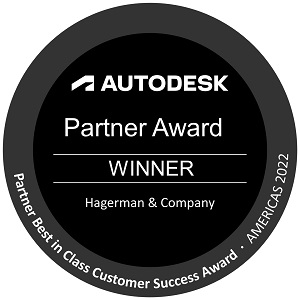But do you know how to stay ahead of all these changes while staying competitive? If you’re thinking that the answer is using cheaper materials, improving process efficiencies, or lowering production costs, you’re not wrong exactly. But you are relegating your offerings to commodity-product status, and any competitive advantage you may enjoy will be short-lived. If you want to aim a little higher—toward producing the bespoke, mass-customized products people want today—one way is through a product innovation platform.

Brandon Au
Coined in the past two years, the term “product innovation platform” represents a turning point in the manufacturing industry—a time when a new generation of disruptive technologies, including the Internet of Things (IoT), promises to expand on traditional product life cycle management (PLM) by connecting the entire manufacturing process: design, make, use. It also offers the opportunity to shun waterfall product development in favor of a more agile, iterative process.
Previously, manufacturers of discrete products, from cars to airplanes to industrial equipment, had to acquire lots of disparate software applications with lots of individual licenses. And once they’d amassed those CAD and data-management systems, simulation applications, and CAM programs, they had to piece them together.
Like trying to build a house with workers who don’t speak the same language and use completely different tools, the old process was not seamless. And in manufacturing, that piecemeal approach doesn’t lend itself to an agile product-development process.
But now, product innovation platforms offer the ability to conceive, design, engineer, optimize, manufacture, sell, and connect to a product in the field—all around the same set of common data. It’s a development cycle that allows you to abandon waterfall processes for good and, ultimately, offer better service to your customers.
That cycle starts with design, which is much more involved than it used to be. Whether you make consumer products or industrial machinery, you want to offer products that specifically match customers’ needs, right? The problem is, those needs now require higher levels of complexity and personalization.
Take, for example, a company called Shoes of Prey, which lets you fully design a bespoke pair of shoes—an excellent model for personalized mass customization. You choose the base model, pick the fabric, finalize design tweaks, and then it’s made and shipped to you. It’s 100 percent yours and the only pair of shoes like it in the world.
But in addition to personalization, consumers are demanding increased complexity. Before, products were essentially just boxes that performed functional tasks; now, they’re beautifully designed pieces of engineering that have aesthetic styling and complex control systems that embrace IoT. Designing these products requires expanded teams across disparate disciplines, from industrial design to electrical engineering to software development.
Integrating those collaborations over geographic distances is a problem that a product innovation platform can help solve by connecting teams to a single shared source of information. Having this complete digital product definition allows design teams to build and optimize in a cloud-based environment. Even better, customers can also participate in the design process by tapping into that single source of information and configuring the product to more precisely match their requirements.
Nevertheless, manufacturers don’t get paid for just producing lovely designs—you have to actually finish manufacturing the part or product. A true product innovation platform embraces the manufacturing process by not only including CAD capabilities, but also integrating them as a complete solution so that you can understand the implications of the design. It should also embrace things like additive manufacturing. So if you’ve used generative design to create the best design based on computation and optimization, in production, you need to leverage additive techniques to fabricate these much more complex bespoke definitions.
And if you’re going to deliver product personalization, you can’t use traditional means of mass production to make those products; you have to use mass-customization manufacturing techniques—such as microfactories, composites, multiaxis machining, and robotics—because every product is going to end up being different.
When it comes to the “use” part of the cycle, it’s about connecting products to provide more efficiency. That efficiency could be in your own manufacturing process, but it could also be providing efficiency to your customer through differential aftermarket services like preventative maintenance or energy optimization. In addition, if you can connect to a product, you can understand its use and employ that data to inform the next design iteration. But you can’t get that connected, IoT benefit unless you incorporate IoT capability at the front end of the design process, which is what a true product innovation platform is all about: the interdependency between design, make, and use.
Now, this may sound all well and good, but you may still be wondering if implementing a product innovation platform makes smart business sense—is it an all-or-nothing solution? The answer is no. You don’t have to adopt the entire product innovation platform from one vendor for it to work. Today’s product innovation platforms are not monolithic pieces of software architecture on a single code base, but a series of cloud-based services that can be combined to act together. It’s akin to how Amazon enables its cloud customers to assemble their own solutions by combining pieces from a collection of services for storage, database management, computing, and analytics.
But to truly adopt a product innovation platform means that you’re willing to take the leap from linear, waterfall product development to agile product development—and that means being ready to embrace some process changes in your organization. And you have to be willing to offer different business models to your customer: For example, aftermarket services for preventative maintenance require more than just software implementation; you also need business support in the form of trained salespeople, back-office billing systems, and engineering departments that are more capable of reacting to change.
It sounds like a heavy burden, but you can start the process in manageable ways. Like any successful manufacturer, you likely have a new product line on the horizon. Use that as your product-innovation-platform test case, changing your tools and process for one product line rather than changing the whole business in one leap. Now, if you’re a startup, you may have the motivation to go all in, but if you’re a larger operation, it might make more sense to embrace the change more progressively through individual product lines.
It’s imperative that manufacturers make this business decision now, and you know why: Disruption is already happening in the market. Consider the integration of generative design and additive manufacturing: Forward-thinking organizations using these technologies will design more effectively, iterate more quickly, and get to market faster, putting traditional manufacturers out of business overnight. With a product innovation platform, you can fully embrace the future of making things. And that will give you true, long-lasting competitive separation. If you’re prepared to take this leap, you’re taking the first step to position your business as a next-generation leader within the industry.





Comments